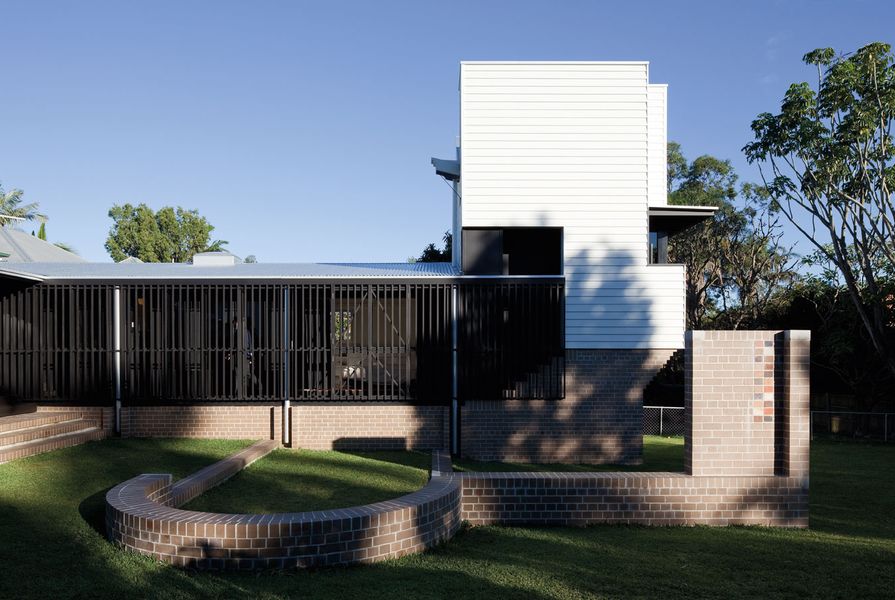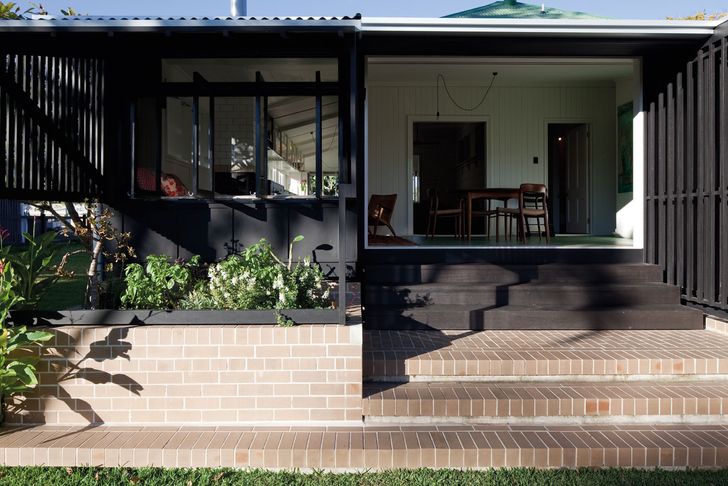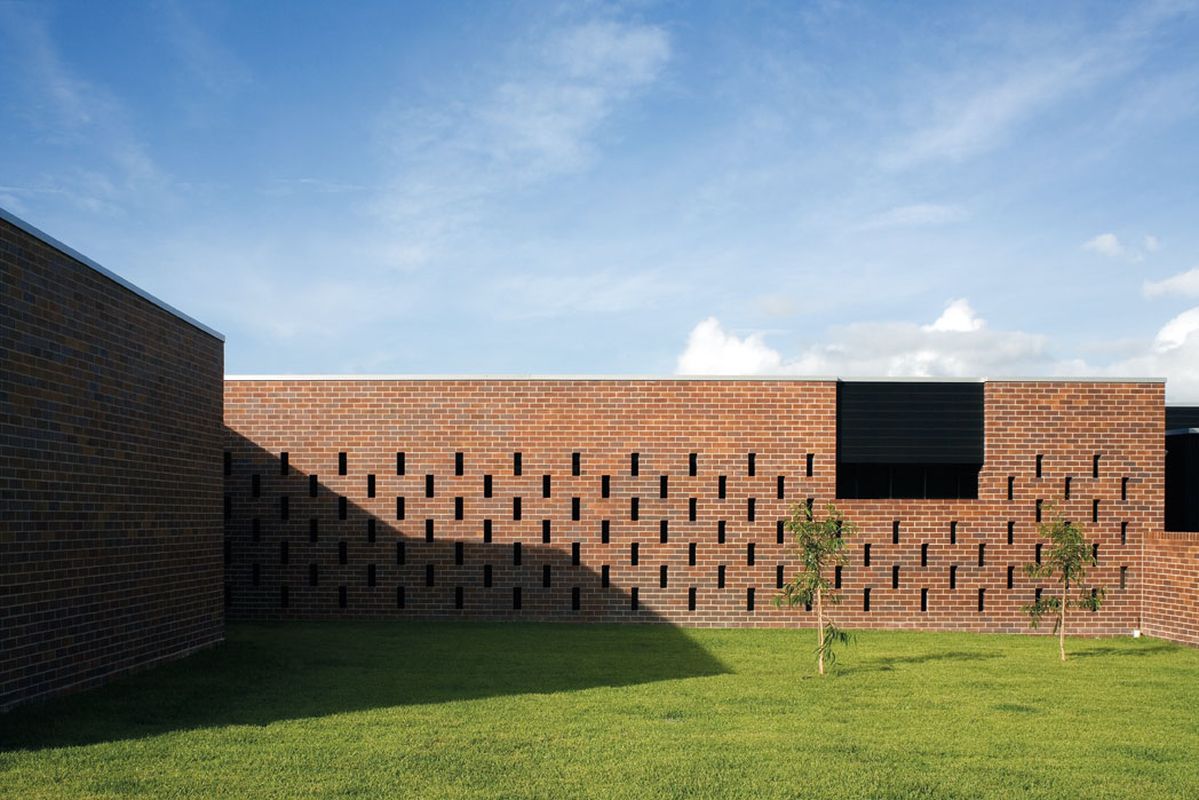There is a particular relationship that we have with the ground in Brisbane that leads us often to brick. This is unexpected in a town where local timber construction is heavily romanticised, while the local brick tradition is mostly unknown, uncelebrated or undocumented.
The natural ground is an inescapable element in a city like Brisbane, shaping its built environment, including its urban format, road networks and its local building traditions. Brisbane-born author David Malouf evokes the setting of the historic centre of Brisbane in his piece, “A First Place: The Mapping of a World”:
The first thing that you notice about this city is the unevenness of the ground. Brisbane is hilly. Walk two hundred metres in almost any direction outside the central city and you get a view, a new view. It is all gullies and sudden vistas.
Wherever the eye turns here it learns restlessness, and variety and possibility, as the body learns effort. Brisbane is a city that tires the legs and demands a certain sort of breath.
West End Tower addition, brick anchors the building to its site.
Image: Jon Linkins
Malouf writes that it is through our evocations of place, and how we interpret and mythologise space, that we find our way into a culture. This “Maloufian” landscape is used to explain the behaviour of early timber vernacular houses called “Queenslanders” that make up a significant piece of urban fabric in the city. The ground is said to be the cause for these houses being built on stumps, perched high above the ground (in some cases, above the flying altitude of mozzies). This structural logic overcomes the nuances of the undulating terrain, and a natural aversion to pests, vermin and snakes, and removes one from the dreaded miasma that apparently threatened the health of colonial occupants of Brisbane.
While there might be some relevance in this mythologising of early timber buildings, our sensitivity to the ground in Brisbane elicits conversations in our studio about nostalgia, legibility and anchoring. Malouf reminds us that our first memories of place are tied to the settings and terrain of our childhood experiences; of banal things such as a concrete kerb detail, a brick garden wall, a path that connects the laundry with the Hills Hoist. Our memories provide a detailed personal reading of blades of grass, cracks in the pavement, and the radiant heat of brick paving in full sun on an autumn morning.
At Hervey Bay Farmhouse, by Owen and Vokes and Peters, place-making is performed by a series of brick enclosures that both define limits of occupied space and manipulate the terrain.
Image: Jon Linkins
There is a special quality about being situated in the space caught between the sloping ground and the level floor of a building. It is a quality that is worthy of preserving or at least evoking when asked to “reoccupy” these places with “downstairs” rooms in alteration projects. Brickwork allows us to introduce the presence of the ground into the interiors of buildings, where the intent is to evoke or to continue to make legible the ground.The terrain in Brisbane’s CBD can be seen folding its way over ridges and down valleys all the way into the backyard settings of the eight kilometre radius of suburbia. But the ground does not stop there. It can be seen sliding its way under the houses on stilts. At night, neighbourhood cats, possums and other native wildlife scurry across this ground under houses, only metres away from sleeping occupants, separated from this nocturnal carnival by 19mm of hoop pine flooring.The ground is the territory of the child, and in all of our residential projects, there is an emphasis placed on making connections between parents and children by engaging building interiors with their gardens. The use of brickwork in our projects is also symbolic of the ground. We have developed a sensitivity to the ground in our project work that stems from the legibility of the ground in Brisbane; a product of its historic low density, and lack of imperative for building makers to increase built-density, leaving vast swathes (often left-over) of outdoor space uncovered.
The effect of living on an elevated floor held up by stilts is that it creates a sense of the ground being something “other,” something that one journeys to – “down to the garden” – something that one overlooks, and is disconnected from. A recurring theme in our residential work, both new work and alterations to Queenslanders, involves reconciling this disengagement between the interior and the garden by way of anchoring. Anchoring is about heft, but also about how a building is detailed. Wooden buildings in Brisbane are vulnerable to termite attack and wood-rot promoted by damp ground. Like Louis Kahn’s predilection for pairing brick with stone, or timber with concrete and so on, brickwork becomes the companion of timber weatherboards in many of our own projects, and resolves how the building engages the ground.
Materiality: Brick and Block in Contemporary Australian Architecture, edited by Ron Ringer (Dry Press Publishing: 2015)
The heft of robust brickwork anchors the delicate wooden buildings and their occupants to their setting. It is in this most prosaic building detail in brick that we are able to bring together both the poetry of timelessness, and the banality of building regulation compliance.
Through the humble brick wall, we are connected to the tradition of building and dwelling.
This essay is an extract taken from the book Materiality: Brick and Block in Contemporary Australian Architecture by Brickworks Building Products (Dry Press Publishing: 2015) and is reproduced here with the permission of the publishers.

























